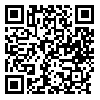2- MSc Student of Medical Physics, Department of Medical Physics and Imaging, School of Medicine, Urmia University of Medical Sciences, Urmia
3- Bs Student, Department Radiology, School of Paramedicine, Urmia University of Medical Sciences, Urmia
Background and Aims: With the increasing use of CT (Computed Tomoghraphy) scans in dentistry especially in the implantology, there may be significant increases in the radiation exposure and its risk. During the last year’s ConeBeam Computed Tomoghraphy (CBCT) has been introduced as an imaging modality for dentistry. The aim of this review article was to present comprehensive information have been published, regarding the radiation dose and image quality of Conventional Multislice Computed Tomography (MSCT), Cone-Beam CT (CBCT) and periapical radiography in dentistry imaging.
Materials and Methods: A review of the literature was carried out in PubMed, Google Scholar, Science Direct and Scopus database using key words (CBCT, MSCT, periapical radiography, radiation dose of dentistry and image quality). These searches were limited to the articles published between the years of 1993 to 2015.
Conclusion: In comparison to MSCT, CBCT had a short scanning times and lower radiation dose, but in comparison to periapical radiography, CBCT had higher radiation dose. In contrast, CBCT with flat panel detector had higher spatial resolution to MSCT. The periapical radiography also had a good image contrast and relatively high resolution. Generally, CBCT was suitable for hard tissue imaging and MSCT was preferred for soft tissue imaging.
Received: 2016/03/2 | Accepted: 2016/03/2 | Published: 2016/03/2
| Rights and Permissions | |
 |
This work is licensed under a Creative Commons Attribution-NonCommercial 4.0 International License. |


